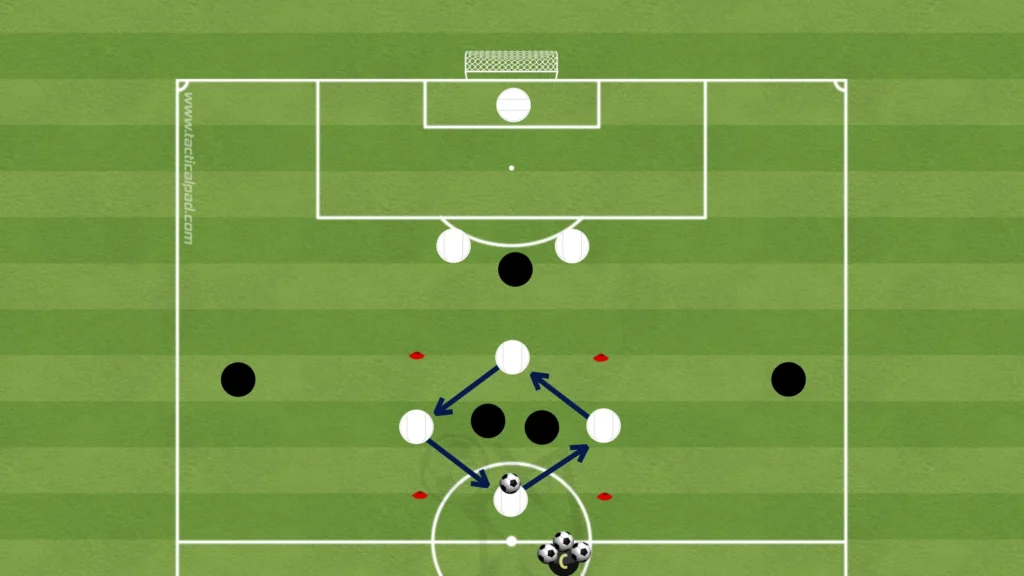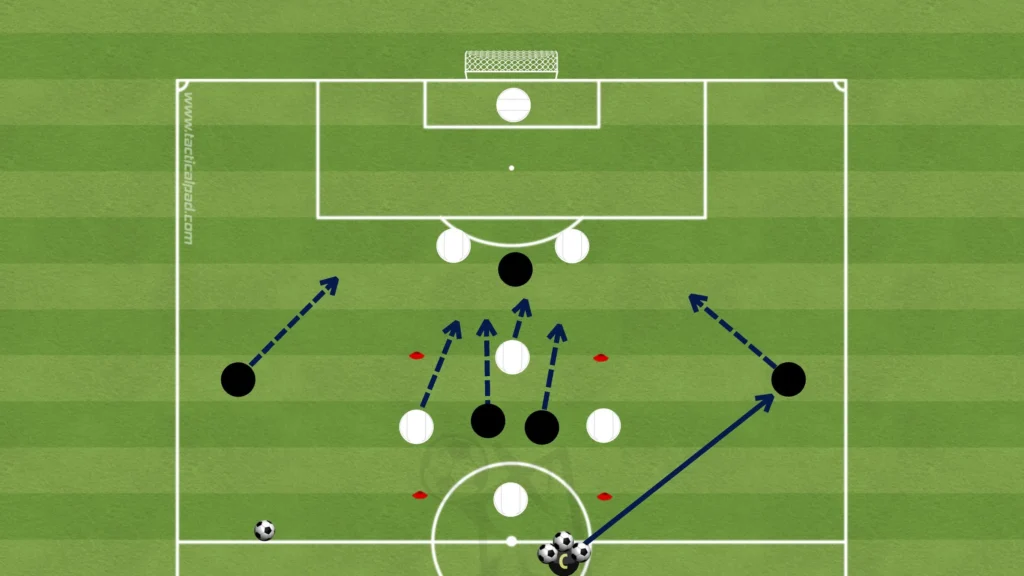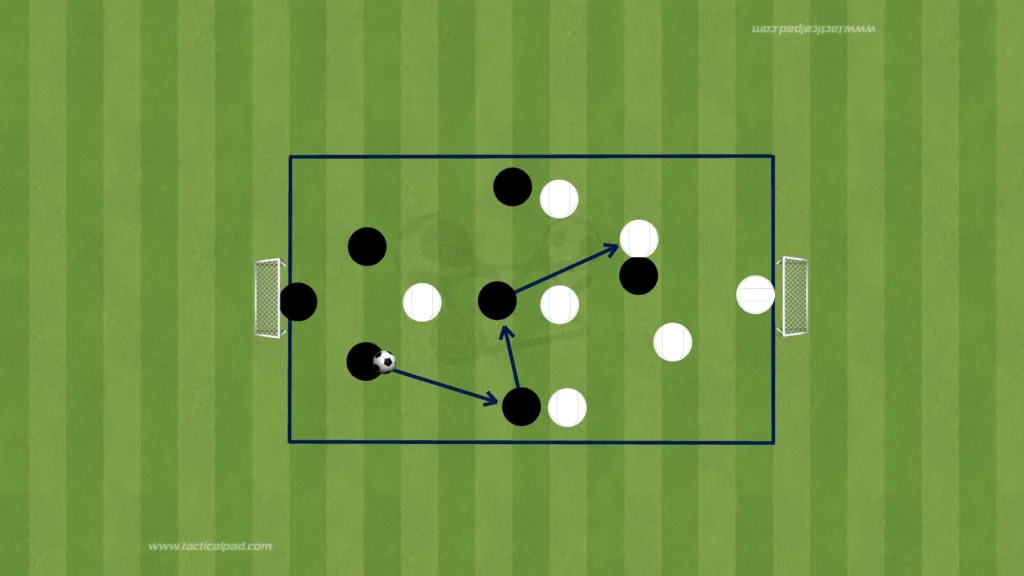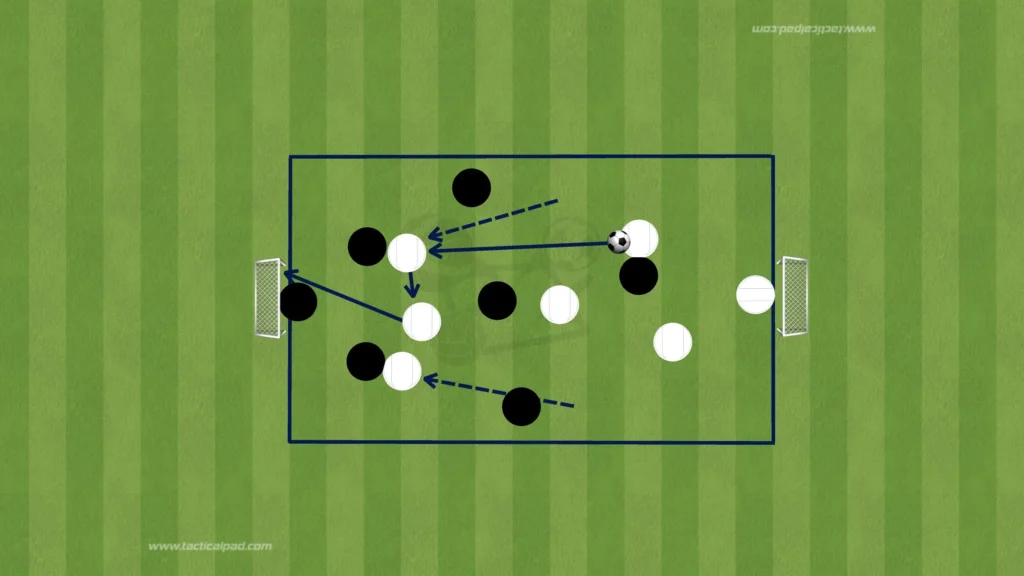Counterattacking is one of the most effective strategies in modern football, allowing teams to exploit the opposition’s vulnerabilities in transition. Speed, precision, and quick decision-making are crucial when breaking forward after regaining possession. In this article, we’ll explore some of the best counterattacking drills to help your team become more lethal on the break.
Why Are Counterattacking Drills Important?
Counterattacking drills are essential for developing players’ ability to transition from defense to attack quickly and efficiently. These drills improve:
- Speed of Play: Quick reactions and sharp movements.
- Passing Accuracy: Delivering precise passes at high speed.
- Decision-Making: Choosing the best option under pressure.
- Positioning and Movement: Exploiting spaces left by the opposition.
Key Counterattacking Drills
1. 3v2 Fast Break Drill
Objective: Improve players’ ability to attack at speed in a numerical advantage while making quick decisions under pressure.
- Setup:
- Use half a pitch with a full-sized goal and a goalkeeper.
- Three attackers start near the halfway line, facing two defenders positioned deeper.
- Instructions:
- The three attackers start with the ball and must sprint forward and create a goal-scoring opportunity.
- The two defenders attempt to delay, intercept, or win the ball to prevent a goal.
- The attack must be completed within 6-8 seconds to simulate the urgency of a real counterattack.
- After the play ends, new players rotate in, and the drill is repeated.

Coaching Points:
- Attackers should spread out quickly and look for gaps between the defenders.
- The player on the ball should drive forward aggressively, while the other two create supporting angles.
- Defenders should delay the attack rather than dive in, allowing teammates time to recover.
- Work on decision-making—should the attack be direct, or should they combine for a better shooting opportunity?
This drill helps players develop composure in front of goal, movement off the ball, and execution under pressure, all key components of a lethal counterattack.
2. Rondo to Counterattack Drill
Objective: Train players to transition quickly from pressing to counterattacking.
- Setup:
- Set up a 4v2 rondo near the center circle. Four players keep possession against two pressing players.
- The pressing players’ team has two wingers and a striker positioned outside the rondo.
- The possession team has two center-backs positioned deeper to defend in transition.
- A goalkeeper defends the main goal.
- Instructions:
- The four attackers in the rondo try to keep possession, while the two pressing players attempt to win the ball.
- If the pressing players win possession, they (or the coach) immediately play the ball out wide to one of the waiting wingers.
- The pressing players from the rondo now join the winger and striker in a 5v4 counterattack against the two center-backs and two recovering rondo players.
- The attackers attempt to score as quickly as possible.
- Reset and repeat with different players.


Coaching Points:
- Encourage quick pressing in the rondo to force turnovers.
- Attackers should sprint into space the moment possession is won.
- Wingers must make sharp, direct movements to receive the ball in dangerous areas.
- Defenders should quickly recover into position to delay the attack.
This drill effectively combines pressing, quick transitions, and fast counterattacks, making it highly realistic for match situations.
3. End-to-End Transition Drill
Objective: Improve players’ ability to switch from defense to attack instantly and make quick decisions in transition.
- Setup:
- Use a medium-sized pitch with two full-sized goals.
- Divide players into two equal teams, each with defenders, midfielders, and attackers.
- Goalkeepers are positioned in each goal.
- Instructions:
- One team starts an attack, trying to break down the opposing defense and score.
- If the defending team wins the ball, they must immediately counterattack towards the opposite goal.
- The original attacking team must react quickly and transition into defensive shape.
- Play continues end-to-end with no resets—players must adapt to the flow of the game.
- Coaches can set time limits for attacks (e.g., teams must score within 8-10 seconds of winning the ball).


Coaching Points:
- Encourage attackers to immediately sprint forward when possession is won.
- Players must recognize when to play directly (fast break) or hold the ball (delaying counterattack).
- Defenders should organize quickly, cut passing lanes, and delay the counterattack.
- Encourage the use of vertical passes into space to catch defenders out of position.
- Teams should practice defensive recovery runs to simulate match conditions.
This drill mimics real-game transitions and forces players to make split-second decisions when switching between attack and defense. It’s perfect for training high-intensity counterattacks and defensive organization in transition.
Conclusion
Mastering counterattacking drills is vital for teams looking to capitalize on transitions and punish opponents on the break. By focusing on speed, precision, and decision-making, your players will be prepared to exploit every opportunity to hit teams on the counter. Start implementing these drills in your training sessions and watch your team become a devastating counterattacking force.
